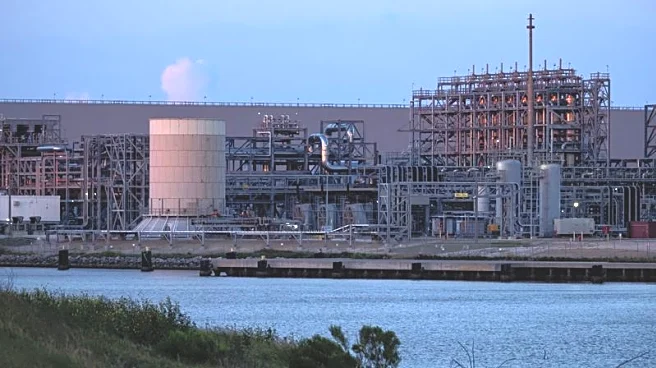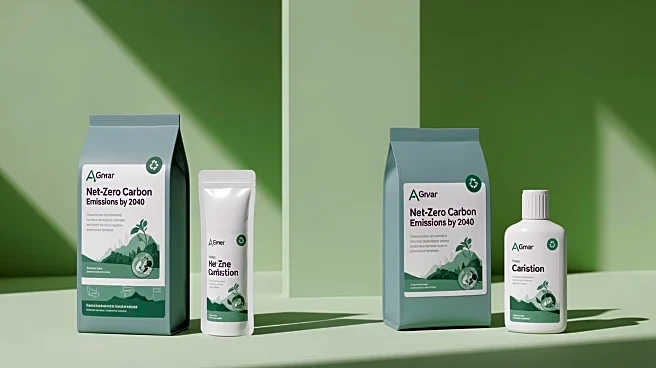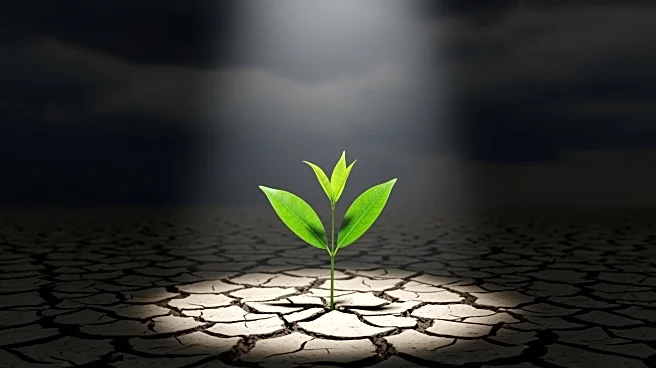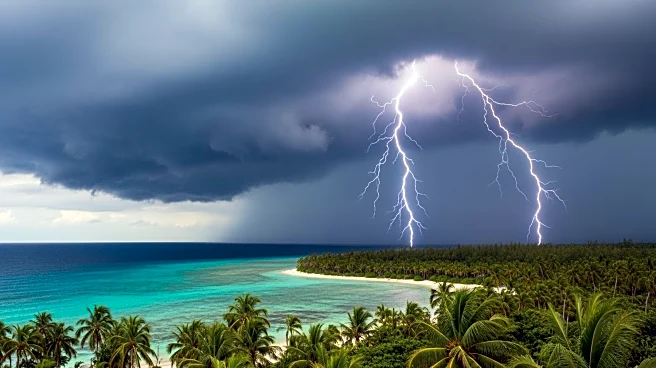What's Happening?
Recent research highlights the growing threat to wind farms from increasingly intense storms driven by climate change. The study, published in Nature Communications, focuses on Class III wind turbines,
which are designed for milder conditions. Researchers Yanan Zhao and Zhenzhong Zeng from the Southern University of Science and Technology in Shenzhen found that over 40% of existing and planned offshore turbine farms in Europe and Asia are exposed to wind speeds beyond their design limits. This vulnerability is exacerbated by the intensifying storms, such as Hurricane Melissa, which saw wind speeds increased by 7% due to global warming. The study underscores the need for more robust turbine designs to withstand these extreme conditions.
Why It's Important?
The findings have significant implications for the renewable energy sector, particularly in regions prone to severe weather. As climate change continues to intensify, the resilience of wind farms is crucial for maintaining energy production and minimizing economic losses. The potential for structural damage to turbines, including blade fractures and tower collapses, poses a substantial financial risk. This situation necessitates investment in more durable turbine models, which, while more expensive, could prevent costly repairs and replacements. The study highlights the urgent need for the industry to adapt to the changing climate to ensure the sustainability of wind energy as a viable alternative to fossil fuels.
What's Next?
The renewable energy industry may need to reassess the design and deployment of wind turbines, particularly in areas susceptible to extreme weather. This could involve transitioning to more robust turbine models capable of withstanding higher wind speeds. Policymakers and industry leaders might also consider revising standards and regulations to ensure that new installations are equipped to handle the increasing frequency and intensity of storms. Additionally, further research into the impact of extreme weather on energy production could inform future strategies for mitigating risks associated with climate change.
Beyond the Headlines
The study raises broader questions about the preparedness of infrastructure in the face of climate change. As extreme weather events become more common, there is a growing need to evaluate the resilience of various sectors, including transportation, housing, and agriculture. The economic and social implications of failing to adapt could be profound, affecting everything from energy security to food supply. This underscores the importance of integrating climate resilience into planning and development across industries.













